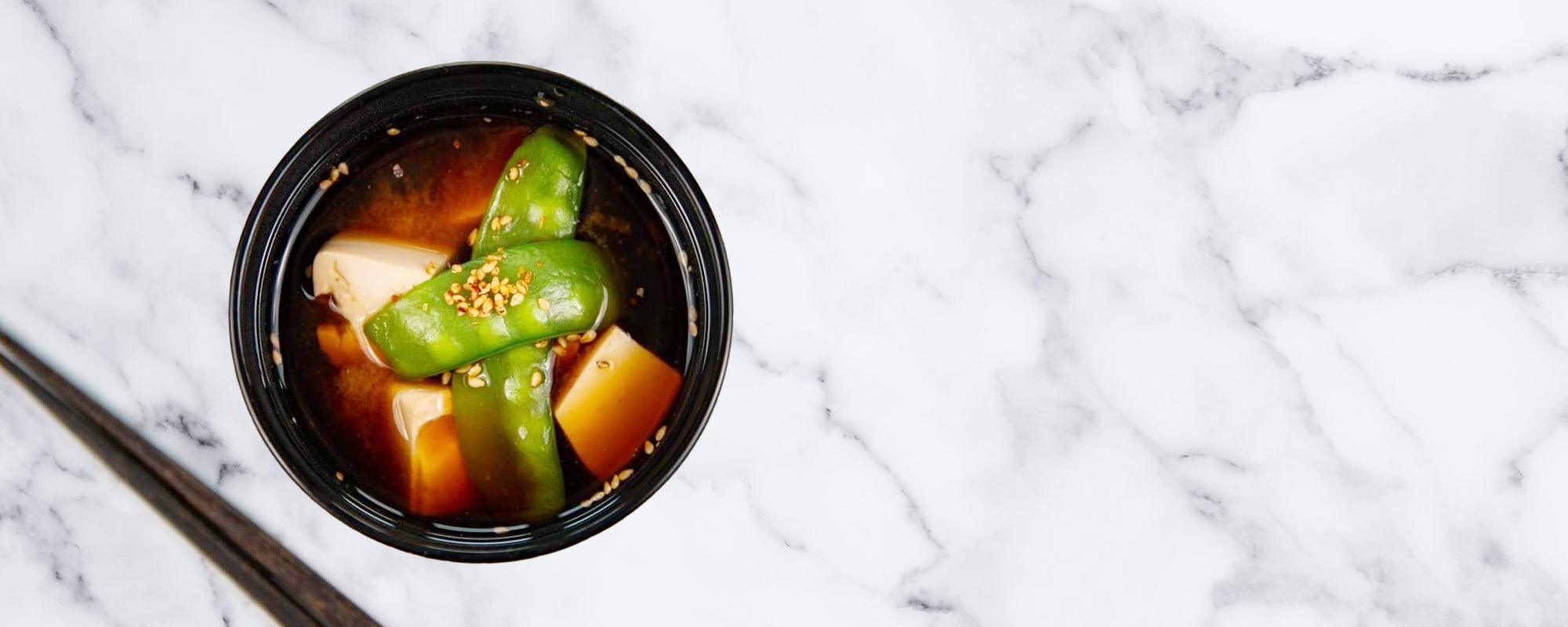Miso is one of the essential ingredients in Japanese cuisine and you may know it from miso soup. A fragrant bowl of soup packed with umami, the fifth taste (alongside sweet, sour, salty and bitter). In Japan, it is the end of the meal, together with a bowl of rice. But what really makes me happy now is that miso soup is not difficult at all to make yourself. Moreover, you can fill the soup with anything you like: mushrooms, noodles, tofu, vegetables, etc.
What exactly is miso?
Miso is a fermented paste made from soybeans, salt and grains, or rice. Fermentation means that you adjust biological components with the help of bacteria, cell cultures or fungi, so that a product has a longer shelf life. Koji is the fungus that allows fermentation to begin so we can enjoy miso as well as soy sauce and sake.

Types of miso
Let's start with white miso, or shiro miso, which is made from soybeans with rice koji. This has a nice light and sweet taste and can be used in dressings, mayo dip and sauces. Yellow miso, awase miso, is a bit darker in color and made from soybeans and barley koji mixed with some rice koji. It is heartier than the white, but still delicious in dressings, marinades and sauces. Red miso, aka miso, is made from soybeans and grain koji. The taste is very intense and really packed with umami, delicious for a bowl of miso soup. Nowadays miso is on the shelves of many health food stores!

Um... konbu seaweed and bonito fish?
Miso paste is not the only ingredient in miso soup, dashi is the stock through which the paste is stirred. It is made from konbu seaweed and bonito fish and you can find it with us , but nowadays also in many Asian shops or organic supermarkets. If you don't want to eat fish, just use a tasty vegetable stock as a base.
Also important if you purchase a pack of miso: it has already been fermented so it has an infinite shelf life. Just put it in a sealed container and store it in the refrigerator, so you can enjoy it for months to come.

The recipe
Now that you know a little more about miso paste, it's high time to share one of my favorite Japanese recipes with you. Favorite because it is so quick, simple and thoroughly Japanese.
Ingredients
Number of servings: 4 people
- 1 liter dashi stock (1 liter water and a bag of kombu dashi powder, fish stock, or vegetable stock)
- 1/2 block of firm tofu, drained and cut into 1cm cubes
- 8 snow peas, cleaned, halved diagonally and blanched for a few minutes
- 4 tbsp dark (red) miso paste
- optional: pinch of shichimi togarashi (7-spice pepper)
Preparation method
- Add the dashi powder to the water and bring the stock to the boil, or bring the fish stock to the boil (be careful whether you need to dilute it with water).
- Add the tofu and snow peas.
- Place some of the stock in a bowl, mix in the miso paste and stir it into the stock in the pan. Bring the soup to a boil and then immediately turn off the heat source.
- Serve the soup in nice bowls and sprinkle with a pinch of shichimi, if you have it.

💬 Tell me, are you going to try this too?

The author: Ingrid Beyer
Ingrid from Happlify crew member Roppongi is a far too modest Japan expert who can tell you all the ins and outs. Roppongi is the webshop for lovers of Japan, design, good food, tea and DIY. Visit Roppongi and the blog regularly for the quickest trip to Japan. Ingrid's blog posts >












Interesting? Share with someone:
1 comment
L.S.,
Miso soep is gefermenteerfe soep, maar volgens mij gaat de fermentatie verloren aks je de misopoeder of -pasta laat koken of in kokend water stopt. Of is dat niet zo ? Wat te doen ?
Met vriendelijke groet,
Start with a bullet journal. Better late than never.
Happy into the new season with the #happyautumn challenge